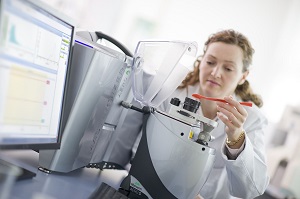A presentation by technology specialist Dr Richard Tweedie, given as part of the recent UK Formulation Showcase at NanoFormulation 2013 (18-21 June 2013, University of Manchester, UK), illustrated the mutual benefits of an ‘open innovation’ approach to product development. His talk focused on the ‘open innovation’ pathway adopted by Malvern Panalytical in collaboration with The University of Leeds in the UK to develop the Aero S, one of the key sample dispersion systems for Malvern Panalytical’s Mastersizer 3000 laser diffraction particle size analyzer.

The Aero S dry powder disperser was launched alongside the Mastersizer 3000 in September 2011 and immediately delivered new capabilities to laser diffraction users, extending dry powder dispersion to even the most fragile materials. The open sharing of information and expertise between Malvern Panalytical and The University of Leeds accelerated the system’s development by bringing together academic and commercial understanding, know-how and engineering expertise.
Not only did this ‘open innovation’ and collaborative working result in the delivery of a truly innovative product designed to solve real-world challenges, it offers a shining example of successful technology transfer that has benefitted all parties involved: Malvern Panalytical went to market with a new product, the university team was able to publish results and increase academic understanding in a key are of interest, and the experience gained by the PhD student involved supported his rapid move into commercial employment.
Laser Diffraction systems, such as Malvern Panalytical’s Mastersizer 3000, determine particle size distributions by measuring the intensity of scattered light as a laser beam passes through a dispersed particulate sample. Effective and appropriate sample dispersion is the key to reliable particle size measurement. However, powder dispersion is a complex phenomenon, governed by a number of competing mechanisms. The Aero S was designed with reference to the most up to date dry powder dispersion theory and introduces a modular dispersion venturi system that allows the user to easily select the most appropriate dispersion mechanism for their samples.
“Redeveloping products when you are the industry leader can be challenging,” said Dr Tweedie. “Open innovation enabled the introduction of fresh viewpoints and new ideas, moving the whole technology to a new level. While the Aero S is the tangible result of this process, the intangible benefits came from the strong relationships formed between Malvern Panalytical and The University of Leeds and, more importantly, the new science that it has stimulated”.
For more information the Mastersizer 3000 laser diffraction particle size analyzer and full range of sample dispersion systems please visit http://www.malvern.com/MS3000